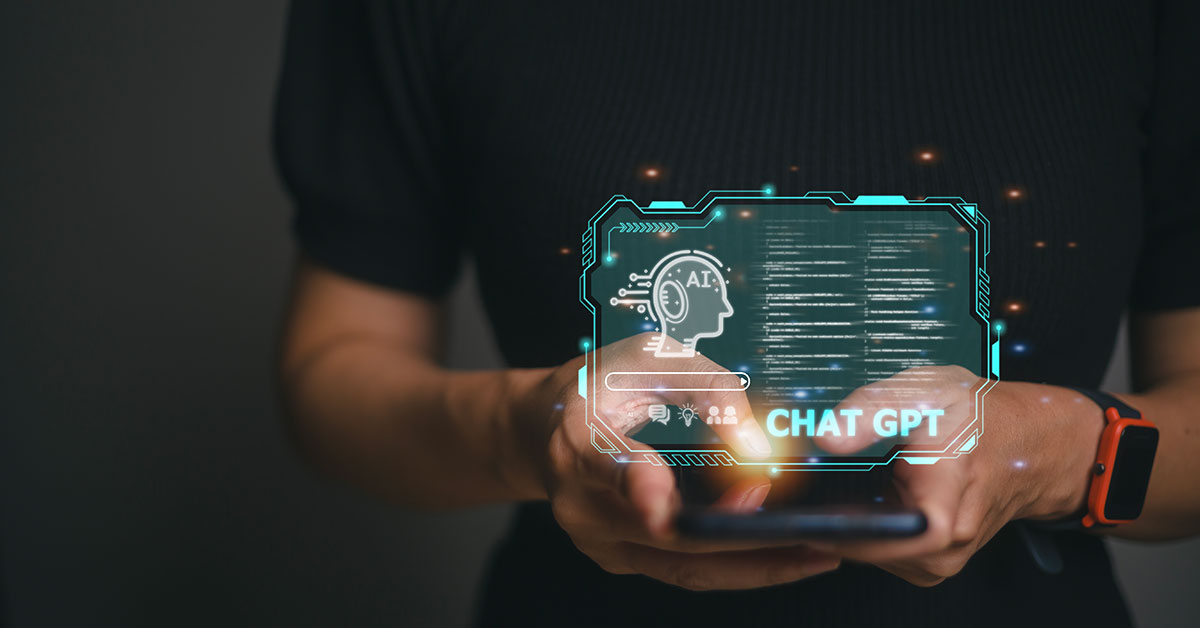The Use of ChatGPT in Higher Education Advancement
Former Analyst

ChatGPT buzz has recently extended to advancement with debates about the pros and cons of using the public chatbot to support higher education advancement efforts.
As many of you already know, ChatGPT, launched by OpenAI, leverages a machine language learning model to converse with humans, answer complex questions, and even write content and application code. While there are aspects of advancement that can benefit from it, I don’t believe that ChatGPT will be a panacea for advancement offices or replace key fundraisers such as gift officers and advancement leadership.
The Limitations of ChatGPT for Higher Education Advancement
Limitations — and concerns — of using ChatGPT in higher education advancement are the lack of human connection, maintaining donor data privacy, and navigating different advancement processes across institutions.
Advancement, at its core, is based on relationships, a sense of belonging, and a shared vision of supporting the greater good of an institution. Giving to an organization is often rooted in human emotions that are triggered for many reasons (being part of something bigger than oneself, philanthropy goals, a love of higher education, and paying it forward for past good deeds received).
Donors are driven by feelings and emotions, which are often elicited by the connections and conversations they have with advancement gift officers. While ChatGPT might facilitate some of the written communications, it cannot replace the cultivation of those very personal relationships.
Another significant factor that limits ChatGPT’s use in advancement is the sensitivity of donor data, anonymity, and the unique business processes in place at many institutions, especially in planned giving.
Inputs, file uploads and feedback entered into ChatGPT are not confidential. The tool logs and learns from every conversation to improve its AI language models. Do not share personal or sensitive information or data, such as donor information, with ChatGPT.
Further, the advancement strategies that work at one institution may not work at another, from planned giving down to the donor level. What motivates one donor to give may not work with other donors, so there may not be too many opportunities to scale advancement efforts with ChatGPT.
5 Ways to Use ChatGPT in Higher Education Advancement
Here are a few areas in which ChatGPT could benefit higher education advancement:
- Donor solicitations
- Donor recognition and stewardship drafts
- Peer-to-peer fundraising
- Event invitations
- Prospect management
ChatGPT can be used for AI-assisted content generation for event invitations, donor solicitations, and donor recognition or stewardship drafts, which advancement staff can personalize and refine for specific audiences or individual donors. ChatGPT can also be beneficial in peer-to-peer fundraising by providing email copy for volunteers reaching out on behalf of an institution.
When given the proper prompts, including direction on tone and style, ChatGPT may save advancement staff time by having the tool provide a base for various correspondence and communications. For example, you may ask ChatGPT to “Write a donor solicitation from a medical school to a prospect, who is passionate about cancer treatment and research, using a professional, yet personal, tone.” The more direction you provide, the closer the output will be to what you need.
It’s important to note that while ChatGPT, in its current state, can write convincingly about nearly any topic — it can also write incorrectly about topics for which its sources are incomplete or incorrect.
Many advancement vendor solutions have been leveraging AI and predictive analytics to facilitate prospect management by identifying and validating donors who are most likely to give based on a given set of factors, an understanding their digital footprint and giving histories, and more. ChatGPT can provide deeper, but limited, insights into an advancement prospect’s giving preferences when asked questions such as, “What causes are [insert name] interested in?”
ChatGPT is still in its infancy but learning exponentially every day. I am sure that its use cases will continue to unfold in ways not imaginable right now. However, it is not a quick fix for all business areas, especially those such as sustainable philanthropy that are highly influenced by donors’ inner emotions, trust, and authenticity.
While various technologies support advancement efforts, there are still many aspects that require human relationships and connections to be successful.
For more on harnessing the power of new technologies like ChatGPT, check out these Tambellini resources:
Categories
Share Article:

Other Posts From this Author:
© Copyright 2025, The Tambellini Group. All Rights Reserved.